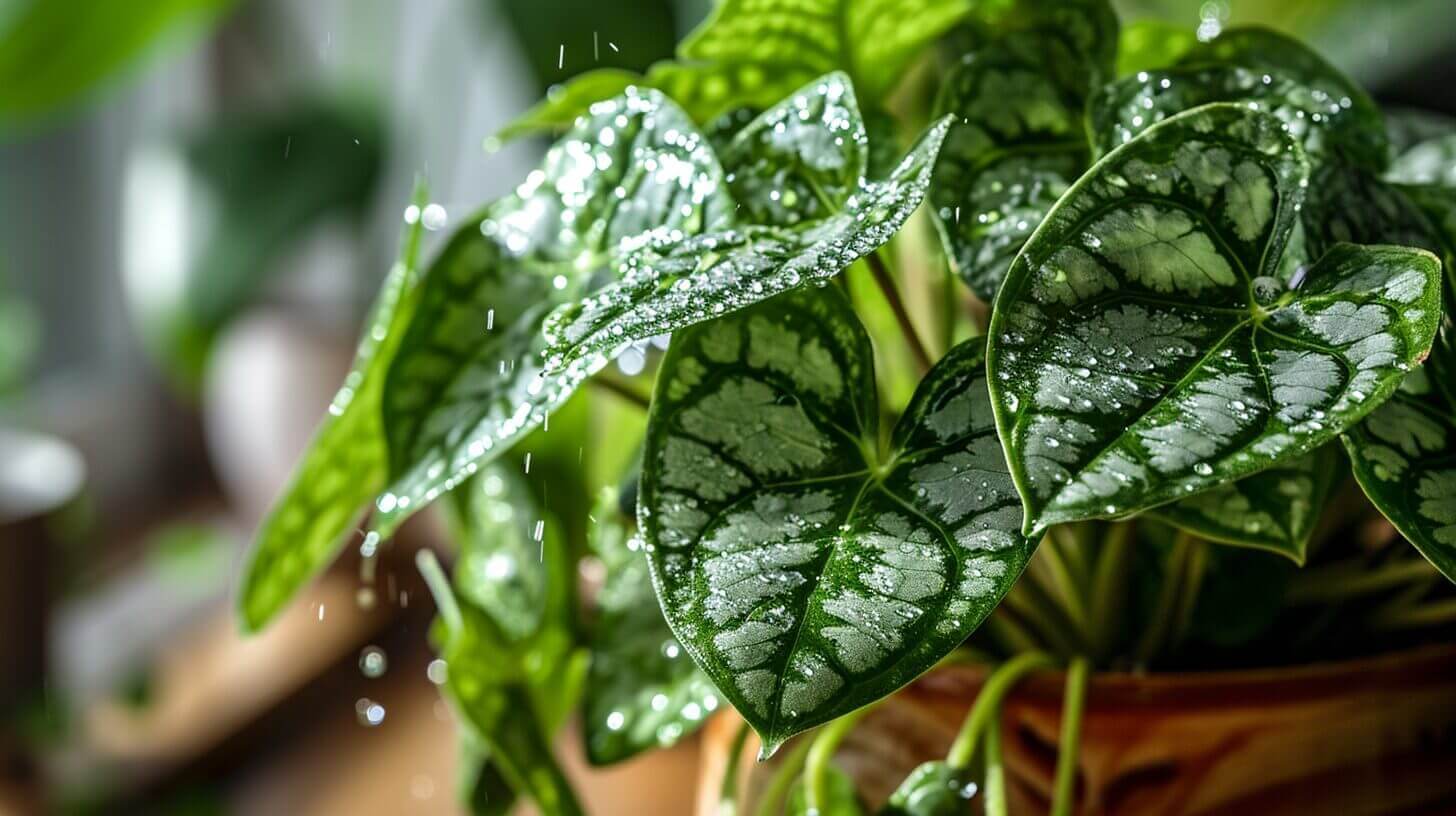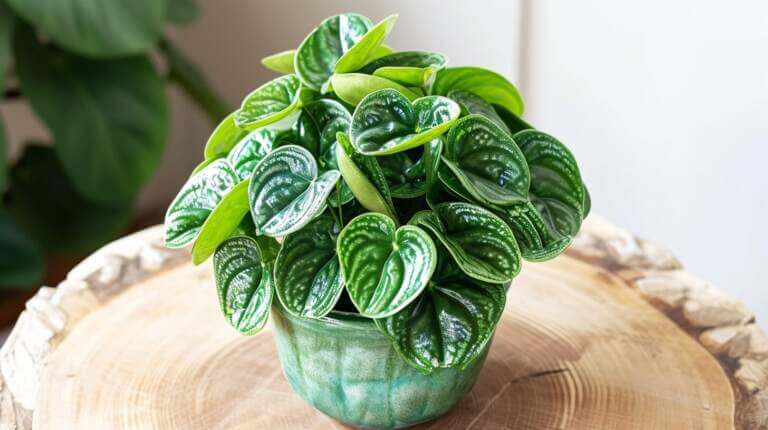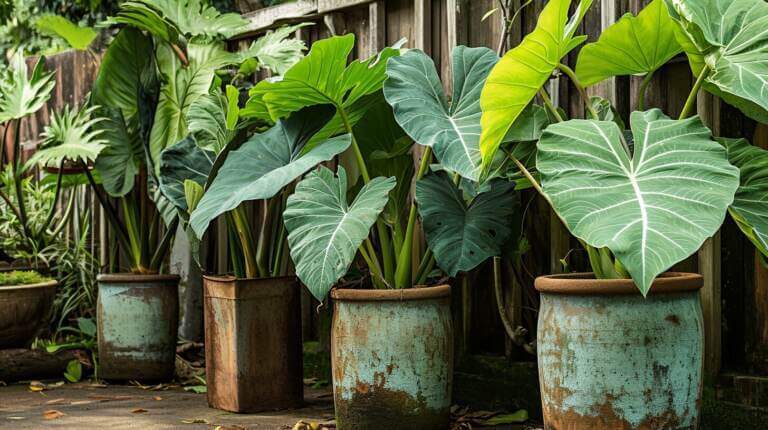How Often to Water Arrowhead Plant: Create the Perfect Watering Schedule
Do you want to create the perfect watering schedule for your arrowhead(Syngonium) plant? You’re not alone! In fact, 75% of arrowhead plant owners struggle with determining how often to water their beloved plants.
But fret not, because in this article, we will guide you through the process of understanding your plant’s watering needs and help you create a schedule that ensures its health and happiness.
Get ready to become an expert arrowhead plant parent!
Key Takeaways
- Water the Arrowhead Plant when the top inch of soil feels dry to the touch
- Avoid overwatering to prevent root rot and other issues
- Use a container with drainage holes to prevent excessive moisture in the soil
- Adjust the watering schedule based on environmental factors such as humidity and temperature
Understanding When To Water Arrowhead Plant
How often should you water your Arrowhead plant to meet its specific watering needs? Understanding the watering needs of your Arrowhead plant is crucial to keeping it healthy and thriving.
One of the most common watering mistakes is overwatering, which can lead to root rot and other issues. To prevent this, it’s important to follow the best watering practices for your Arrowhead plant.
This includes watering the plant when the top inch of soil feels dry to the touch. It’s recommended to water thoroughly, ensuring that the water reaches the roots. However, be cautious not to leave the plant sitting in standing water as this can also cause root rot.
Factors Affecting the Watering Frequency of an Arrowhead Plant
To determine the appropriate watering frequency for your Arrowhead plant, you need to consider several factors that directly affect its water requirements.
The first factor to consider is the climate in which you live. In hot and dry climates, your Arrowhead plant will likely need more frequent watering to prevent it from drying out. On the other hand, in cooler and more humid climates, you may need to water less frequently.
Another factor to consider is the size and age of your plant. Younger plants generally require more frequent watering compared to mature plants.
Additionally, the type of soil and potting mix you use can also impact the watering frequency. Well-draining soil allows excess water to escape, reducing the risk of root rot.
Lastly, take into account the time of year. During the summer months, when temperatures are higher, you may need to water more frequently compared to the cooler months.
Signs of Overwatering and Underwatering an Arrowhead Houseplant
One way to determine if your Arrowhead plant is being overwatered or underwatered is by observing its foliage. Overwatering can lead to yellowing leaves, root rot, and a droopy appearance, while underwatering can cause dry, crispy leaves and wilting. It is important to strike the right balance to ensure the health of your plant.
To help you identify the signs of overwatering and underwatering, here is a table outlining the common mistakes and ways to prevent root rot:
| Signs of Overwatering | Signs of Underwatering | Preventing Root Rot |
|---|---|---|
| Yellowing or drooping leaves | Dry, crispy leaves | Use well-draining soil |
| Mushy or smelly roots | Wilting | Allow soil to dry between watering |
| Excessive moisture in soil | Slow growth or stunted appearance | Adjust watering frequency based on plant’s needs |
Tips for Creating a Watering Schedule for Your Arrowhead Plant
To create a watering schedule for your Arrowhead plant, use a simple and effective method. Follow these tips to ensure your plant stays healthy and hydrated:
- Choosing the right watering container: Opt for a container with drainage holes to prevent water from pooling at the bottom. This will help avoid overwatering and root rot.
- The importance of soil moisture monitoring: Invest in a moisture meter or use your finger to gauge the soil’s moisture level. Arrowhead plants prefer slightly moist soil, so aim to water when the top inch of soil feels dry.
- Consistency is key: Establish a regular watering schedule based on your plant’s needs and environmental conditions. Consider factors such as humidity, temperature, and the size of your container. Remember, it’s better to underwater than overwater, as Arrowhead plants are susceptible to root rot.
Adjusting the Watering Schedule Based on Environmental Factors
Adjust your watering schedule for your Arrowhead plant based on environmental factors such as humidity, temperature, and container size. These factors play a crucial role in determining the optimal watering conditions for your plant. By adjusting the watering frequency accordingly, you can ensure the health and growth of your Arrowhead plant.
To help you understand how environmental factors affect watering, refer to the table below:
| Environmental Factors | Adjustments to Watering Schedule |
|---|---|
| High Humidity | Decrease watering frequency |
| Low Humidity | Increase watering frequency |
| High Temperature | Increase watering frequency |
| Low Temperature | Decrease watering frequency |
| Large Container Size | Increase watering frequency |
| Small Container Size | Decrease watering frequency |
Frequently Asked Questions
How can I determine when my arrowhead plant needs water?
Check the top few inches of soil with your finger – if the top 1-2 inches are dry, it’s time to water your arrowhead plant. The leaves may also begin to droop slightly when thirsty.
Should I let the soil dry out completely before watering my arrowhead plant?
No, you don’t want the soil to dry out completely. Arrowheads prefer consistently moist soil. Allow just the top portion to dry before watering again.
How often will I need to water my arrowhead plant?
Generally every 7-10 days during the growing season, depending on light, humidity, temperature, and other factors. Water less frequently in winter when growth slows.
What’s the best method for watering an arrowhead plant?
Water thoroughly until it drains freely from the drainage holes when watering. Avoid just sprinkling the top of the soil.
Can I let my arrowhead plant sit in water after watering?
No, you should discard any water that collects in the saucer after watering. Don’t allow the pot to sit in standing water as it can lead to root rot.
How do I know if I’m under or overwatering my arrowhead plant?
Signs of underwatering include drooping, wrinkled leaves and dull color. Overwatering causes yellow leaves, rotten roots, fungus gnats, or mold.
Can I Use Tap Water to Water My Arrowhead Plant?
You can use tap water to water your arrowhead plant, but it’s not the ideal choice. Using filtered water for arrowhead plant care is recommended as it removes any chemicals or impurities that may be harmful to the plant.
Alternatively, using rainwater for watering arrowhead plants has several benefits. Rainwater is natural, free from chemicals, and contains nutrients that can promote healthy growth.
Consider using filtered or rainwater for optimal care of your arrowhead plant.
Can I Mist My Arrowhead Plant Instead of Watering It?
Misting your arrowhead plant can be an alternative watering method, but it shouldn’t replace regular watering entirely. While misting can provide some moisture, it’s not enough to fully hydrate the plant.
The arrowhead plant prefers to be watered directly at the root level. So, it’s best to continue watering your plant as needed and use misting as an additional method to increase humidity or to refresh the leaves.
Can I Use a Self-Watering Pot for My Arrowhead Plant?
Using a self-watering pot for your arrowhead plant can be a great option. These pots have a reservoir that automatically waters the plant when needed, reducing the risk of overwatering or underwatering.
The benefits of using self-watering pots include convenience, as they require less frequent watering, and they help maintain consistent moisture levels, promoting healthy growth.
Consider using a self-watering pot to simplify your watering routine and provide optimal care for your arrowhead plant.







